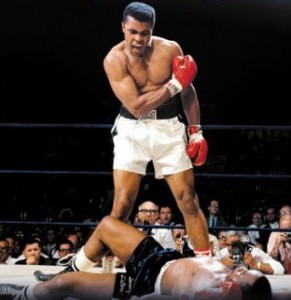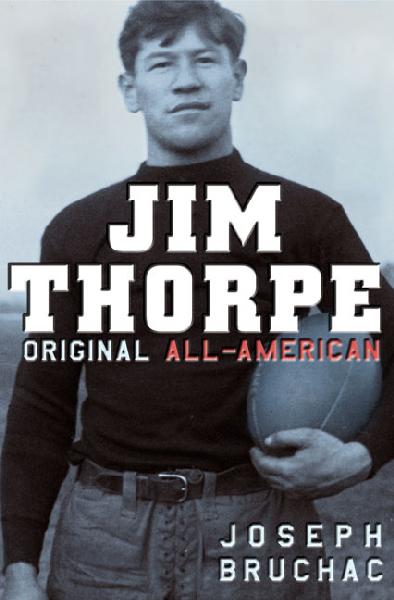My project is a website for my American Sports
Literature class. I taught the
class last year for the first time and am teaching it again in the fall and
spring. American Sports Literature
is a junior/senior English elective course. Students learn about American history through the rise in
power of sports. We study its influence
and how it affected the lives of Americans. Whatever was going on in society
was reflected in the popular sports of the time. We start in the late 1800’s by studying immigration and race
relations and work chronologically throuh the years up to modern
times. I try to put the events of
history in the context of today in order for students to connect to the subject
matter. By the end of the course,
students understand how sports play a crucial role in modern times, and how
this huge influence was predicated on past events.
In order to reach these learning goals, students
read and write about these subjects.
The core text is from a book called Idolsof the Game. The two
sportswriters who wrote this book, Robert Lipsyte and Peter Levine, were
determined to figure out who were the most important athletes in American
history. Their criteria not only
requires the athletes to be great at their sport, they also had to be
influential in the greater American consciousness. They had to change history and the way Americans looked at
life. Muhammad Ali, for example,
is considered an idol of the game, not only for his dominant performance in the
ring, but for his strength in standing up to the American government during the
Vietnam War. Jackie Robinson was
the first black baseball player since the late 1880’s. He was a great player, yet is most
remembered because of his ability to stare down the face of racism and not
fight back. He paved the way for
other black ballplayers and his strength and courage are characteristics we can
all learn from.
Idols of the Game is great reading and I’ve
read it twice from front to back.
This doesn’t mean that all students are interested in doing this
themselves. As we discussed in class, many students learn in different ways and are intelligent in many ways. One kid could be great at reading and writing but can't draw a picture, for example.
Ken Robinson discussed in his Ted Talk how schools are ruining creativity. He argues that human beings are naturally different and diverse, and human life is inherently creative. He argues that the current educational structure stifle these principles. We need to change in order to improve education, to engage our students.
I am going to keep these ideas in mind while I'm teaching Idols of the Game. Each chapter I try to
explore the athletes from a different angle. For example, last year, I presented the first athlete, John
L. Sullivan, with a lecture and reading.
We watched a documentary on the second athlete, Jack Johnson. We did an interactive PowerPoint with
Jim Thorpe, the third athlete.
While these activities provided the information to the students, it
wasn’t as dynamic as I think I’m capable of. I thought there are better ways of teaching the students
these subjects while also teaching them 21st century skills.
I’m more of a digital native than many other
teachers, yet I feel like a digital immigrant when I’m working with
students. I sometimes feel like
I’m a step behind in their digital world.
There’s a new thing coming out every week, it seems. It’s hard to keep up. I took this course in order to get
closer to their world.
This was one of the major points of my website and
the additional activities I have created on it. I had no idea these tools existed. I would’ve never had the time to research them this summer,
never mind building a whole website!
Although I already had an assortment of projects for my sports lit
class, I now have a far wider array of tools to pick from. I have constructed a Storify for the
first chapter on John L. Sullivan.
Typically, I introduce Sullivan in a lecture and the
students take notes. This seems
like a more traditional method of teaching. It strikes me more of an information dump. Students are consumers in this instance
and, as I’ve learned in this course, we want students to be creators.
Instead of doing my usual lecture, I will instead
assign students a Webquest activity for John L. Sullivan. Instead of me telling them the
information, the students will instead discover about Sullivan and his place in
history through several links and videos found on the Storify page. The students will not only discover the
information, they will be learning how to use the Internet to find information.
I also plan on using other digital tools for other
assignments in the course. I would
like to create a Prezi for the Introduction section to the book, then
eventually have the students create Prezis for their final projects for the
“Race in American Sports” unit.
I would like to create a VoiceThread for the unit on
Jack Johnson. Johnson was a
controversial male black boxer in the early 1900’s. His brash behavior shocked his white audiences. I think an interactive dialogue on
Johnson would be an interesting activity for students.
As we discussed in class, students have been using
many image and video-based products in their digital worlds. I think if I figure out how to use
VideoThread, the students will benefit from discussing Johnson online because
they will see how they can use their native digital tools for higher-level
thinking. These apps are not just
for entertainment!
That is one major theme I took out of Michael
Wesch’s editorial on the use of the technology in education. I interpreted that one of his points
was that technology is here to stay and is an embedded part of human nature in
youth. He argues that we’ve been ignoring this part of culture and we need to adjust accordingly. Instead of pushing the rising technology aside, we need to
harness that energy with the critical thinking skills our modern society is so
in desperate need of. My hope is,
through using VideoThread, I will be able to accomplish this very idea: use
video technology to discuss racial issues in the 1900’s America.
I also was able to investigate the Vine app on my
iPod. This is one the hottest new
fads in youth culture, only months old.
This free technology allows its users to take ten second looping
videos. I have yet to find
practical use for it in the classroom, but I think this is another tool that
Wesch would put to use. I’ve been
playing with it more since class ended, I’m sure I’ll think of a lesson to use
it for!
I decided to organize these future projects on a
Google Site. My motivation for
creating a Google project was both practical and philosophical. I thought it had the most interesting, albeit
frustrating, technological opportunities.
These tools are all free, so I shouldn’t be complaining too much. And it seems like Google is something
that is here to stay. That’s where
my philosophy end comes in.
I watched students struggle with simple email
commands last year. They had email
addresses from ancient email servers.
They were copying and pasting documents into emails instead of attaching
documents, which for an English teacher, can be particularly traumatizing. These are basic skills students need to
know in order to function in the real world.
Again, from my perspective, Google seems to have
staying power. If students have
these computer skills, they will have another skill to be used in the real
world. I plan on eventually
teaching students how to use Google Sites to upload their own assignments
to. I hope to do that in the
spring.
I know this is not part of the dominant ideology found in much of education currently. This is not something students will be tested on. Yet, this is still an important skill that students will need in the long run.
I also figured out how to use Google Forms, for
surveys and contact information, and how to post documents to the site. I am ecstatic about this tool. I will now be able to provide assignments
to students who are absent, as well as a place for the forgetful student to
find their homework. I hope to get
students in the habit of emailing their homework to me in attachments, rather
than copying and pasting!
Overall, this course provided evidence in the need
to instill higher order level thinking skills in today’s youth. They know how to use new technology;
yet don’t use it for the most constructive reasons. Usually, students use Instagram to take photos or Vine to
take videos. They text their
friends, they play games, and constantly bored and want to look at their
phones. I hope to alleviate that
boredom with more interactive class room activities that focuses on their different styles of learning and their different skill sets.
I hope that they will understand that they’re unhealthily
addicted to their phones, much like the article I read in the course text book,
only this addiction seems worse.
[Quick aside: I realized that the chapter on TV addiction was slightly
outdated. The real test of
strength will be to attempt a No Phone for a week drive. That’d be a really interesting
experiment!]
Can we harness this change in social behavior for
the greater good? Can we help
teach students to see past the novel yet superficiality of their digital worlds
and help them look at it more critically?
These seem to be the burning questions that are at the forefront of my
thinking after taking this course.
I hope these new tools and thoughts will help me push my students in the
right direction and will stick with them as they enter the real world and shape society's future.





Thank you for presenting about Storify, definitely something I will have to look into this summer. Seems to be a ver easy resource to have.
ReplyDeleteGreat stuff, Corey. This project feels practical, complex and like it has a myriad of uses for you and your students. Hope it works for you come the fall!
ReplyDelete